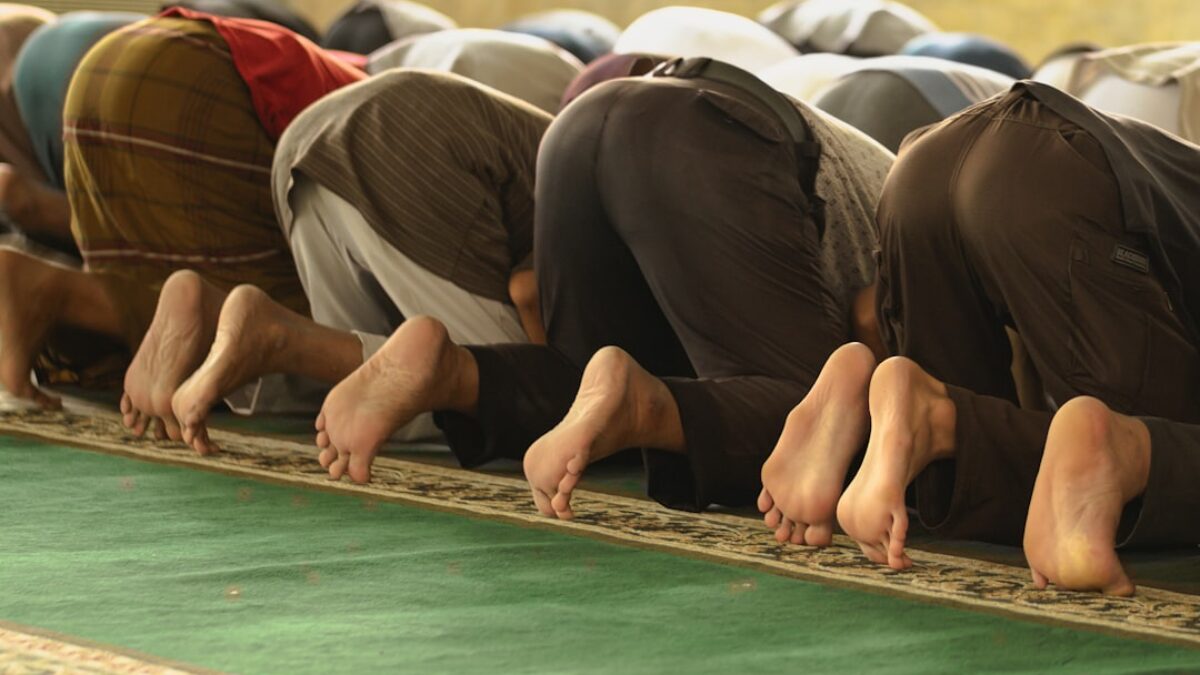The call to prayer echoes across rooftops and alleyways five times every day, weaving itself into the rhythm of Muslim life from dawn to nightfall. For more than 1.8 billion believers, this adhan is not merely background noise; it is a living invitation to step away from worldly concerns and stand before the Divine. Daily prayer, or Salah, is the second pillar of Islam, positioned immediately after the testimony of faith itself. It is both a sacred duty and a profound mercy, designed to anchor the soul in the remembrance of Allah while refining character, purifying wealth, and knitting communities together in shared devotion. Understanding the essential role of Salah in Islam means exploring how these brief, repeated encounters with the Almighty strengthen faith, deepen spiritual connection, and ultimately transform every dimension of human experience.
Understanding Salah in Its Qur’anic and Prophetic Context
The Arabic word ṣalāh derives from a root that conveys the ideas of connection, mercy, and nearness. In the Qur’an, Allah commands:
“Establish prayer, for prayer restrains from shameful and unjust deeds; and remembrance of Allah is the greatest [force] without doubt. And Allah knows the [deeds] that you do.” (Surah Al-‘Ankabut 29:45)
This verse encapsulates the two primary purposes of Salah: moral discipline and spiritual intimacy. The obligation was not revealed all at once. The early Muslim community was first instructed to pray twice daily, then three times, and finally five, allowing hearts to grow gradually into the rhythm of divine conversation. The Isra and Mi’raj—the miraculous Night Journey—marked the moment when fifty daily prayers were reduced to five, yet the reward of fifty remains, underscoring both Allah’s mercy and the immense value of each single unit (rak‘ah).
Spiritual Architecture of the Five Daily Prayers
Salah is more than isolated acts of worship; it is a microcosm of the believer’s entire relationship with Allah. Each prayer has:
- Temporal markers: dawn, midday, mid-afternoon, sunset, and nightfall
- Geographic orientation: the qiblah toward the Ka‘bah in Makkah
- Physical postures: standing, bowing, prostrating, and sitting
- Recitative elements: Qur’anic verses, supplications, and glorifications
Together these elements form a spiritual architecture that reorients the human being five times daily toward the Divine presence, much like a compass needle continually returning to true north.
Key Components of Salah: From Intention to Conclusion
1. Niyyah (Intention): The Invisible Foundation
The Prophet ﷺ taught, “Actions are but by intentions, and every person shall have only that which he intended.” Before the first Allahu Akbar, the worshipper silently forms the intention to perform a specific prayer for Allah alone. This invisible act shifts the prayer from mere physical exercise to conscious devotion and protects against riyā’ (showing off).
2. Takbir, Recitation, and Rukūʿ
With the opening takbir, the worshipper symbolically leaves the world behind. The Fātiḥah, regarded as the essence of the Qur’an, is recited in every unit, followed by additional verses or chapters. Rukūʿ (bowing) embodies humility, and the repeated glorification—“Subḥāna rabbiya al-ʿAẓīm”—acknowledges Allah’s absolute greatness.
3. Sujūd: The Apex of Submission
The prostration is the moment when the believer is closest to Allah. In this posture—forehead, nose, palms, knees, and toes touching the ground—the ego is literally lowered to the dust. The Prophet ﷺ said, “The closest a servant is to his Lord is when he is prostrating, so increase in supplication then.”
4. Tashahhud and Taslīm: Sealing the Conversation
During the final sitting, the worshipper testifies to Oneness and Prophethood, then invokes peace and blessings upon the Prophet ﷺ. The concluding salām—turning first to the right and then to the left—extends that peace to all creation, reminding the believer that worship is never private; it radiates outward.
Benefits and Importance: How Salah Transforms the Believer
Spiritual Benefits
- Constant Remembrance: By interrupting daily routines with prayer, the believer is spiritually hydrated against forgetfulness (ghaflah).
- Inner Purification: Each prayer is a mini-ablution for the soul, washing away minor sins as water washes away physical dirt.
- Direct Communication: Salah is mi‘rāj for the ordinary believer, a nightly journey to the Divine court.
Psychological and Emotional Benefits
- Stress Relief: The physical movements paired with rhythmic recitation produce measurable reductions in cortisol levels.
- Time Management: Structuring the day around prayer times cultivates discipline and prevents procrastination.
- Community Bonding: Congregational prayers foster ṣafā’ (brotherhood/sisterhood) and reduce social isolation.
Ethical and Social Benefits
The Qur’an explicitly links the establishment of prayer with the prevention of munkar (evil). When performed with sincerity, Salah acts like a reboot for moral awareness, making the believer more mindful of honesty in business, kindness to parents, and justice in society. Historical examples abound: during the Prophet’s era, marketplaces would empty at prayer times, creating an automatic ethical checkpoint against fraud and exploitation.
Practical Applications: Making Salah a Living Reality
Building Consistency in a Busy Life
Strategy 1: Micro-Scheduling
Break the day into prayer windows rather than rigid slots. For example:
- Fajr: after the dawn glow but before sunrise commute
- Ẓuhr: during the lunch break or immediately after online meetings
- ʿAṣr: the “mid-afternoon slump” transformed into a spiritual recharge
- Maghrib: sunset viewed as a daily appointment with Allah
- ʿIshāʾ: the final decompress before sleep
Strategy 2: Technology as an Ally
Use adhan apps with adjustable calculation methods, smartwatch reminders, and location-based qiblah finders. However, balance is key: silence intrusive notifications during prayer itself to maintain khushūʿ (focus).
Creating Sacred Spaces
Whether at home, work, or traveling, designate a musalla corner—a clean mat facing Makkah, a small shelf for Qur’an and prayer beads, and perhaps a fragrant reed diffuser to mark the boundary between the sacred and the mundane. Employees have successfully negotiated quiet rooms or unused conference spaces; students have repurposed library carrels. The Prophet ﷺ said, “The [entire] earth has been made for me a mosque and a means of purification.”
Enhancing Focus (Khushūʿ)
Physical Techniques
- Perform wudūʾ slowly, treating each limb as a canvas for mindfulness.
- Adopt the Sunnah practice of looking at the place of prostration, reducing visual distractions.
Mental Techniques
- Before takbir, spend thirty seconds visualizing the Grand Throne above and the bridge (ṣirāṭ) beneath.
- Recite each Qur’anic verse as if revealed for the first time, noticing new meanings.
Spiritual Techniques
Pair each posture with a personal duʿāʾ list. While bowing, ask Allah to ease the burdens of those who bent over backwards for you. While prostrating, place your own worries literally beneath His majesty and rise lighter.
Frequently Asked Questions
What is the minimum requirement for a prayer to be valid?
The arkā (pillars) are five: (1) standing if able, (2) the opening takbir, (3) recitation of Al-Fātiḥah, (4) bowing, and (5) prostration. Missing any pillar deliberately invalidates the prayer, while forgetting it can be rectified with the prostration of forgetfulness (sujūd al-sahw). Additionally, facing the qiblah and maintaining ritual purity (ṭahārah) are prerequisites.
How do Muslims pray in extreme latitudes where daylight or darkness lasts for weeks?
Islamic jurisprudence offers multiple methodologies. The most common is to follow the timings of the nearest moderate latitude city where day and night are distinguishable. Another approach divides the 24-hour period into five equal segments. Local scholars issue unified timetables to preserve community cohesion.
Can women delay prayer during menstruation?
Yes. Menstruation (ḥayḍ) and post-natal bleeding (nifās) temporarily exempt women from both prayer and fasting. These missed prayers are not made up later, reflecting Allah’s mercy toward the female body. Once purity is regained, she resumes the cycle as normal.
Is there a “best” prayer to perform in congregation?
While all congregational prayers are meritorious, the ʿIshāʾ and Fajr prayers are singled out in ḥadīth for special reward. Attending Fajr in congregation is likened to praying the entire night, and those who attend both are safeguarded from the Fire. However, ʿAsr is also emphasized as the “middle prayer” referenced in Surat al-Baqarah 2:238.
How should new Muslims learn the physical movements and recitations?
A three-step approach works best:
Visualization: Watch reliable videos (e.g., products of Al-Maghrib Institute or SeekersGuidance) to imprint the sequence. Simulation: Practice with a friend or mentor in slow motion, repeating each posture aloud. Integration: Begin with Fajr (only two units) and gradually add the remaining prayers over 1–2 weeks. Allah rewards sincere effort even if pronunciation is imperfect.
What if I consistently miss a prayer due to work demands?
The Sharīʿah recognizes necessity (ḍarūrah). Consult a trustworthy scholar to explore combining prayers—Ẓuhr with ʿAṣr, or Maghrib with ʿIshāʾ—in cases of chronic hardship. Document the pattern, seek workplace accommodation (e.g., flexible break times), and use combined prayers as a temporary bridge rather than a permanent solution.
Are
























Post Comment